This post may contains affiliate links. Read our full disclosure here.
How texture impacts the feel of a room goes far beyond mere decoration – it’s the secret language that communicates with our senses without saying a word. While most people obsess over paint colors or furniture placement, I’ve discovered through countless redesigns that texture is what truly transforms a space from flat to fascinating. That velvety throw pillow against a leather sofa? That’s not just decor – it’s a sensory conversation happening in your living room.
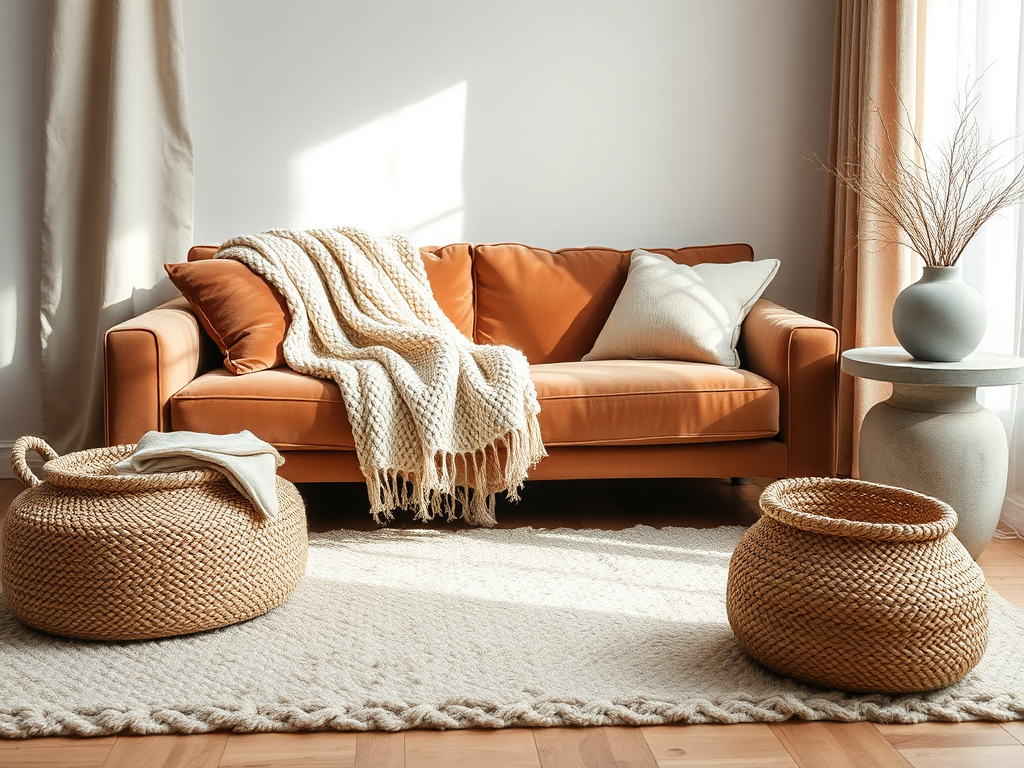
Walk into any well-designed space and you’ll notice it immediately, even if you can’t quite name it. The contrast between smooth and rough, soft and hard, matte and glossy creates a multi-dimensional experience that appeals to our primal senses. When my friend redid her living room last year, she kept the same neutral color palette but added layers of contrasting textures – suddenly the space felt completely different without changing a single paint chip.
The Hidden Power of Texture in Interior Design
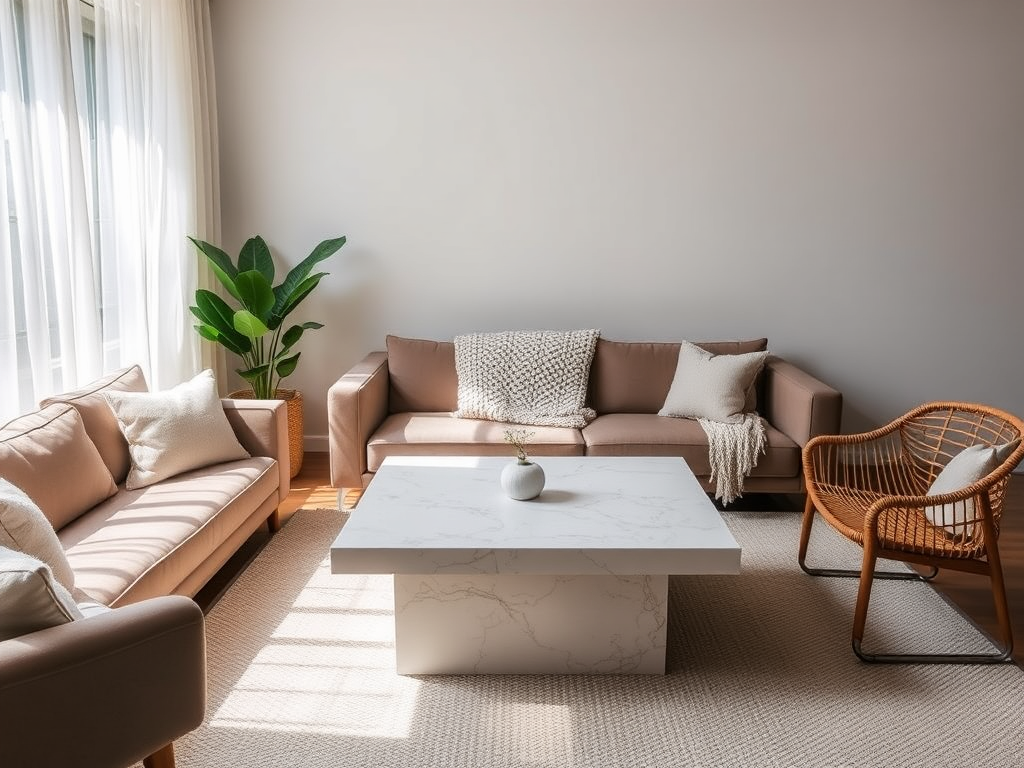
How texture impacts the feel of a room starts with understanding that texture works on both conscious and subconscious levels. Unlike color, which we process visually, texture engages multiple senses at once – creating a deeper emotional connection to our surroundings. This multi-sensory experience is what makes texture such a powerful design element.
Even when working with a limited budget, texture can transform a space more effectively than expensive furniture. I’ve seen rentals with basic white walls come alive through textural elements like woven baskets, nubby throws, and ceramic vases with interesting glazes.
- Texture determines how light plays across surfaces, creating depth and dimension
- It affects acoustics – soft textures absorb sound while hard surfaces reflect it
- Textural contrast creates visual interest even in monochromatic spaces
- Different textures trigger different emotional and physical responses
“Texture speaks to us on a primal level. We don’t just see it – we feel it with our whole bodies, even before we consciously register it.” – Interior designer Amanda Hayes
What many homeowners miss is how texture connects to our memories and associations. The principles of sensory interior design show that rough textures like stone or exposed brick can feel grounding and authentic, while silky fabrics signal luxury and comfort. These associations run deep and affect how we function within a space.
Soft vs. Hard: Finding the Perfect Texture Balance
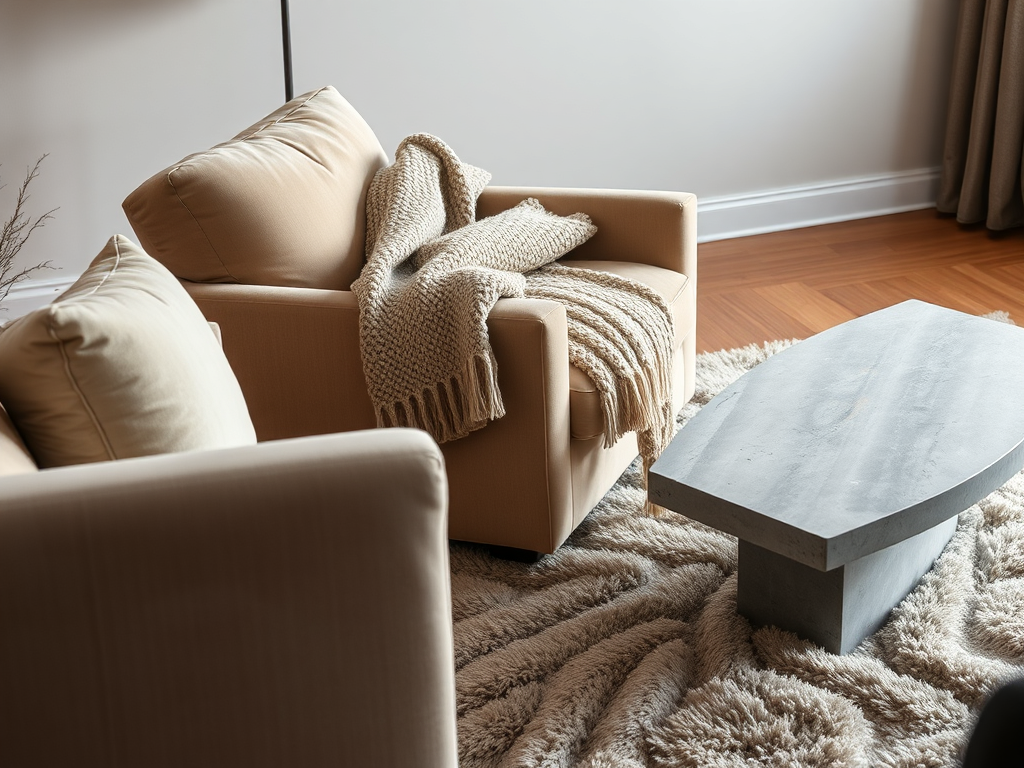
The magic of how texture impacts the feel of a room happens when you play soft elements against hard ones. This contrast creates visual tension that keeps a space interesting while also serving practical purposes. Think of it as a conversation between comfort and structure – both have important things to say.
My living room transformed when I paired my streamlined leather sofa with a chunky knit throw and linen pillows. The juxtaposition of textures made both elements more impactful. Without this balance, rooms can feel either too sterile or too soft and shapeless.
- Hard textures (metal, glass, stone) provide structure and reflect light
- Soft textures (wool, cotton, velvet) add warmth and absorb sound
- Combining textural opposites creates dynamic, balanced spaces
- Even minimalist rooms need textural variety to feel complete
A client once complained her dining room felt “cold” despite warm paint colors. The solution wasn’t more color but more balance: we added a textured jute rug under her glass dining table, fabric chair cushions, and a wooden centerpiece. These soft elements counterbalanced the hard surfaces without sacrificing the clean aesthetic she loved.
Home decor texture tips that work in any space include mixing natural materials like wood and stone with manufactured ones like metal and glass. This approach creates spaces that feel both grounded and sophisticated. Color affects your mood, but texture determines how those colors are experienced.
Layering Textures for Dimensional Depth

Layering textures in interior design creates spaces with psychological depth that invite exploration. When every surface in a room offers the same texture – whether it’s all smooth or all rough – our brains quickly categorize and dismiss the space. But mixed textures keep our senses engaged and curious.
I learned this lesson dramatically when redesigning my bedroom. Despite a thoughtful color scheme, something felt “off” until I introduced multiple textural layers – a quilted duvet, linen sheets, a chunky knit throw at the foot of the bed, and woven blinds. Suddenly, the room had dimension it previously lacked.
- Start with large textural pieces (rugs, sofas, curtains) before adding smaller elements
- Mix natural textures with manufactured ones for balance
- Consider textural contrast between adjacent surfaces
- Vary the scale of textures from fine to chunky

How texture impacts the feel of a room is especially evident in all-white or neutral spaces. Without varied textures, these rooms can feel clinical or boring. With textural layering, they become sophisticated and inviting. My friend’s all-cream living room transformed from flat to fascinating with the addition of a bouclé chair, sisal rug, and hammered metal accents.
Interior design texture tips from professionals often emphasize using texture to add visual weight where needed. Heavy textures like velvet or thick wool can anchor a space with high ceilings, while making high ceilings feel cozier and more intimate.
How Texture Influences Light and Perception
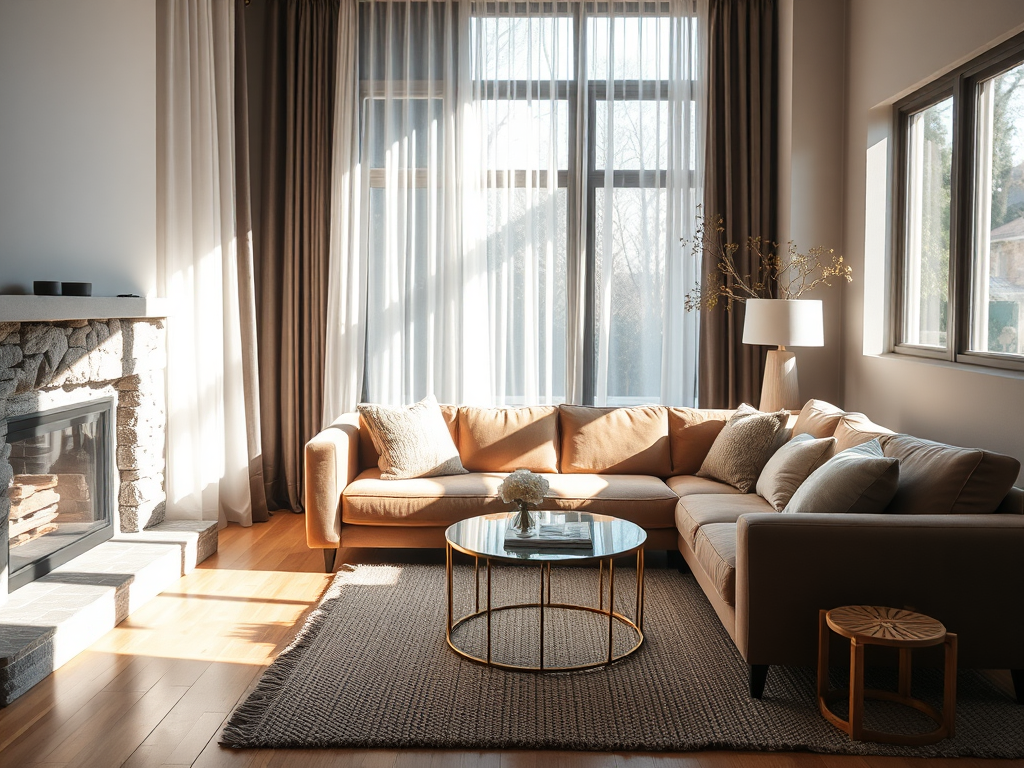
Visual texture in interior design dramatically affects how we perceive light in a space, which in turn shapes our entire experience of a room. Rough, matte surfaces diffuse light and create a soft, gentle ambiance, while glossy, smooth surfaces reflect light sharply and can make spaces feel more energetic or formal.
I noticed this phenomenon in my own home when I swapped out shiny satin curtains for linen ones in my south-facing living room. The quality of light changed completely – from bright and somewhat harsh to diffused and calming. The room’s atmosphere transformed without changing a single light fixture.
- Textured walls create subtle shadow play that adds depth to flat surfaces
- Reflective surfaces like polished stone or metal amplify natural light
- Matte finishes reduce glare and create a more relaxed atmosphere
- Textured light fixtures cast interesting shadow patterns
How texture impacts the feel of a room is particularly noticeable at different times of day. A heavily textured wall might look subtle in direct light but become dramatically shadowed at sunset. Smart designers consider these changes when selecting materials, creating spaces that transform beautifully throughout the day.
The different flooring materials affect room acoustics in ways that completely change how we experience a space. A room with hardwood and no textural elements to absorb sound will feel vastly different from one with a plush rug, fabric furniture, and textured wall hangings – even if both share the same color scheme and layout.
Setting the Mood Through Textural Materials
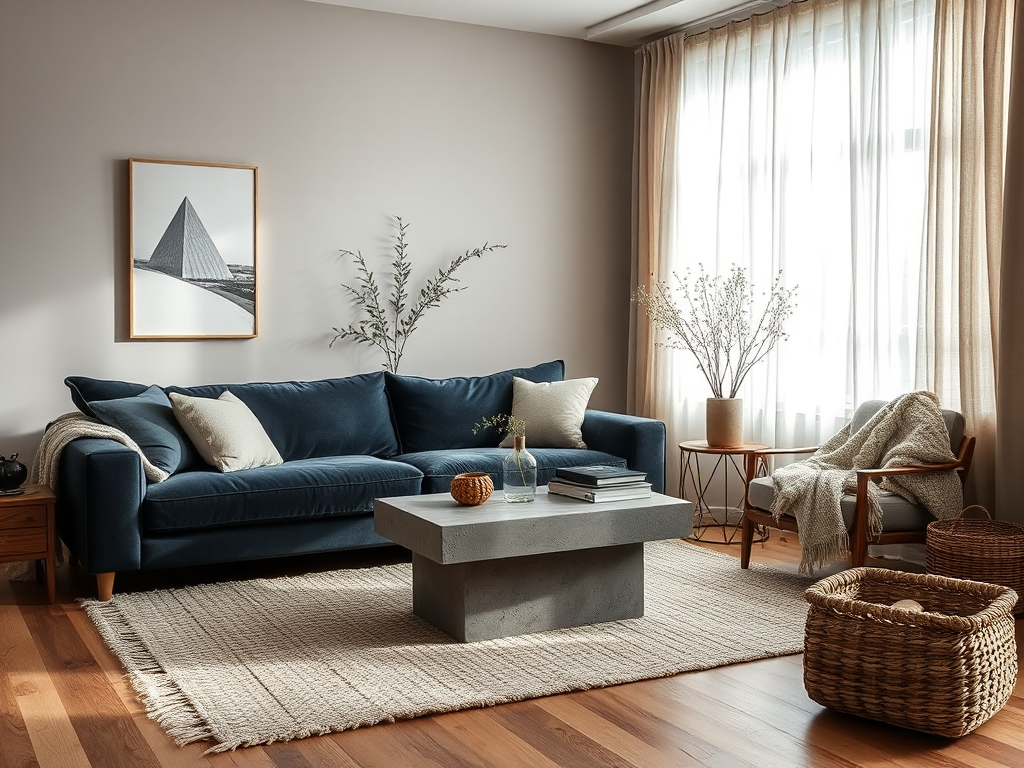
Texture and mood in design are intrinsically linked – certain materials evoke specific emotional responses almost universally. Understanding these connections gives you tremendous power to shape how people feel in your space without them even realizing why they feel that way.
When my sister wanted her home office to feel more creative and less corporate, we didn’t just change colors – we transformed textures. Replacing her sleek glass desk with a richly grained wooden one and adding a woven wall hanging instantly made the space feel more organic and inspiring. The mood shift was immediate and powerful.
- Natural textures (wood, stone, plants) create grounding, authentic feelings
- Luxurious textures (velvet, silk, fur) evoke indulgence and sophistication
- Industrial textures (concrete, metal, glass) project modernity and efficiency
- Handcrafted textures (pottery, weaving, hand-finishes) add character and warmth
How texture impacts the feel of a room goes beyond aesthetics into psychological territory. Research shows that different textures can actually affect productivity, creativity, and stress levels. This is why understanding feng shui principles can help create balanced, harmonious spaces through thoughtful material selection.
Room texture ideas that work particularly well for creating specific moods include textured wallpaper for drama, soft upholstery for comfort, and natural wood for warmth. My favorite bedroom transformation involved replacing smooth painted walls with grasscloth wallpaper, immediately creating a cocoon-like atmosphere perfect for rest.
Using Texture to Define and Divide Spaces

In today’s open-concept homes, how texture impacts the feel of a room becomes even more crucial for creating distinct zones without physical barriers. Textural changes signal transitions between areas more subtly than color blocks or furniture arrangements alone.
When I helped redesign my friend’s studio apartment, we used texture strategically to create separate “rooms” within one open space. A plush area rug defined the living area, sleek pendant lights marked the dining space, and a textured headboard wall created a bedroom nook. Visitors always comment on how spacious it feels despite its small square footage.
- Change floor textures to naturally guide movement and define zones
- Use textured screens or macramé hangings as semi-transparent dividers
- Create textural focal points to anchor different functional areas
- Layer lighting to highlight textural differences between zones
“Texture is the most effective way to create psychological boundaries in open spaces. Our brains register these changes subconsciously, helping us understand how to use each area.” – Design psychologist Sarah Cornell
Adding texture to a room creates natural stopping points and transitions. In my open kitchen-dining area, the shift from tile to wood flooring subtly signals the change in function without needing a wall or door. These textural boundaries help spaces feel organized without feeling chopped up.
The Honest Truth About Texture and Touch
The most powerful way how texture impacts the feel of a room is quite literal – through physical touch. We experience spaces not just with our eyes but with our entire bodies, and the tactile qualities of a room speak directly to our comfort level and emotional response.

I’m always fascinated by watching guests enter a home for the first time. They might not comment on the textures, but they’ll instinctively run their hands along an interesting wall finish or sink into a soft sofa with an audible sigh. These tactile interactions form their impression of the space more powerfully than almost anything else.
- Consider high-touch surfaces (door handles, chair arms, throws) carefully
- Include contrasting tactile experiences throughout a space
- Remember temperature perception is affected by texture (metal feels colder than wood)
- Incorporate textural elements at different heights for complete sensory experience
How texture impacts the feel of a room sometimes comes down to the smallest details. The smooth coolness of marble countertops, the gentle give of a well-upholstered dining chair, the softness of a throw pillow – these tactile moments create the overall sensory story of your home.
When decorating, consider creating a touch-friendly environment that invites interaction. Rooms that discourage touch (think stuffy formal living rooms with plastic-covered furniture) create psychological distance and discomfort. Spaces that welcome touch create connection and relaxation. This principle of tactile design works beautifully when creating sensory-rich interiors that feel deeply satisfying.
Texture as the Timeless Design Element
While color trends come and go, texture remains remarkably timeless. How texture impacts the feel of a room outlasts seasonal color palettes or furniture styles, making it a smart investment for design longevity.
My grandmother’s home taught me this lesson perfectly. Though her color choices dated to the 1970s, the quality textural elements – a handwoven rug, leather reading chair, and carved wooden coffee table – still feel relevant and beautiful today. They’ve weathered decades of design trends because good texture transcends fashion.
- Invest in high-quality textural pieces rather than trendy patterns
- Choose natural materials that age gracefully (wood, leather, stone)
- Update a room’s feel by swapping textural accessories seasonally
- Look for textural interest in classic, enduring designs
Modern texture design ideas often incorporate traditional materials in fresh ways – like using rattan in contemporary forms or applying terrazzo in unexpected places. These approaches honor texture’s timeless appeal while keeping spaces current.
This textural approach to design also supports sustainability. When you focus on quality materials with inherent textural interest, you’re less likely to redecorate frequently. My linen curtains, wool rug, and solid wood furniture have remained in my home for years while paint colors and accent pieces have changed around them.
Mastering the Art of Textural Harmony
How texture impacts the feel of a room ultimately comes down to finding the right balance – not just between hard and soft elements, but between complexity and simplicity. The goal isn’t maximum texture but meaningful texture that serves your lifestyle and aesthetic preferences.
Through years of experimenting in my own home and helping friends with theirs, I’ve found that the most successful rooms typically include 3-5 dominant textures working harmoniously together. Any fewer and the space feels flat; any more and it can become chaotic or overwhelming. The textural sweet spot depends on your space, but moderation with purpose usually wins.

The journey of understanding texture is ongoing – I’m constantly noticing new tactile elements that make spaces feel special. Whether it’s the smooth coolness of a stone countertop on a summer day or the comforting weight of a chunky throw during winter, these sensory experiences create the moments that make a house truly feel like home.
Start with one room, focusing on balancing hard and soft textures before adding more layers. Touch everything before you buy it. Consider how materials will feel in different seasons. Most importantly, create a space that feels good to you – because how texture impacts the feel of a room is ultimately about creating a sensory experience that supports the way you want to live.




